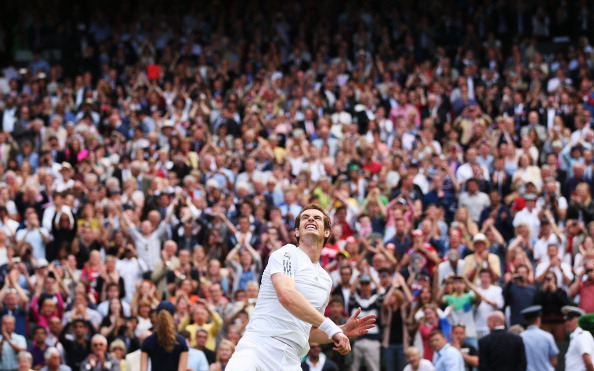
By Bill Simons
It’s an odd British curiosity, a national sport, a form of collective torture you just don’t see in America, France, or most sensible lands.
It might have to do with geography: a solitary island in a cold sea? Or maybe it’s about a gloomy climate that means its victims plaintively seek bright rays when and wherever they can? Perhaps it’s about the lost glories of a distant empire, or it speaks to a certain Victorian propriety forged on proper school fields. Or maybe it’s just a long history of sporting futility.
Who knows?
The unvarnished truth is that Great Britain loves to toy with great disasters. Could it be a Dunkirk mentality?
The heart of the matter is that the good Brits invest a certain collective capital in their athletes, an emotional buy-in. It’s as if, in their marrow, the athletes of this plucky island embody God and Crown. Here we are told that the weight of a nation is on some hero’s shoulders. Wimbledon dreams are deconstructed. Headlines speak of the monarchs of Centre Court. The nation seems perpetually on the brink, though the characters have changed over the years.
There was Tiger Tim Henman, the classy semi-Oxfordian Brit who four times reached the Wimbledon semis only to fall short. (Has there been a greater tease in tennis?) The most recent figure is teen Laura Robson, who many want to crown as the Queen of Centre Court.
But most of all, of late, it has been a Scottish lad, Andy Murray, who has driven the sporting public here bonkers. Yes, he won the Olympics. (In fact, a mailbox beyond Court 2 has been painted gold to commemorate the moment.) Plus, he took the 2012 US Open and now has a lofty No. 2 ranking. Still, Wimbledon is Wimbledon, and for four years, Murray has fallen in the semis or finals. His loss to Roger Federer in the final last year was one of the most emotional in tennis history.
For a long while today, it seemed that Britain would be facing one more Murray defeat, as another left-handed Spanish hunk, Fernando Verdasco, came out on fire. With a new racket in hand, serving big and confounding the Scot, going for the lines, imposing his will with hook forehands and a dangerous backhand, Verdasco raced to a two-set lead. It was easy to forget that he had a losing record on grass, a losing record this year, and a perhaps deceptively low No. 54 ranking. Verdasco did not look like a man who has to scramble just to make it onto Spain’s Davis Cup team. Could this, finally, be sweet big-stage salvation for him after blowing a classic five-set, five-hour-plus match against Rafa Nadal in the ’09 Aussie Open on a double fault?
Murray shanked groundies, slapped his racket, and winced in mental agony, while Verdasco—the man with jet-black hair—seemed to be in the stratosphere.
The British throng was in a tizzy.
But never mind the stratosphere. Eventually, back on Wimbledon’s good earth, Murray had the tennis universe just where he wanted it. He began to cut down on his unforced errors and bad decisions. For the seventh time in his career, he stormed back from two sets down to win. His rousing 4-6, 3-6, 6-1, 6-4, 7-5 triumph provided the nation with just what it craved: a nerve-jangling brush with national disaster, and an enchanting victory which propelled their man—the hope of this not always United Kingdom—into the semis.
Murray is just two wins away from Britain’s first championship in 77 years, a feat which would mean nothing less then redemption for this good land.


















